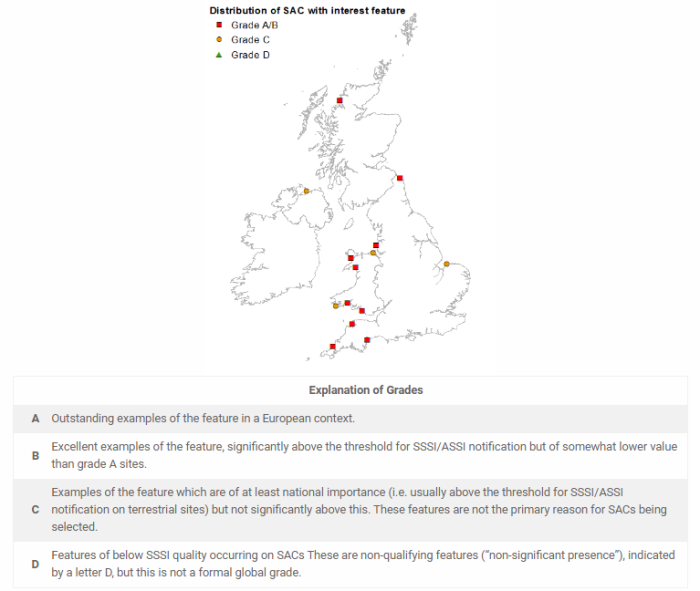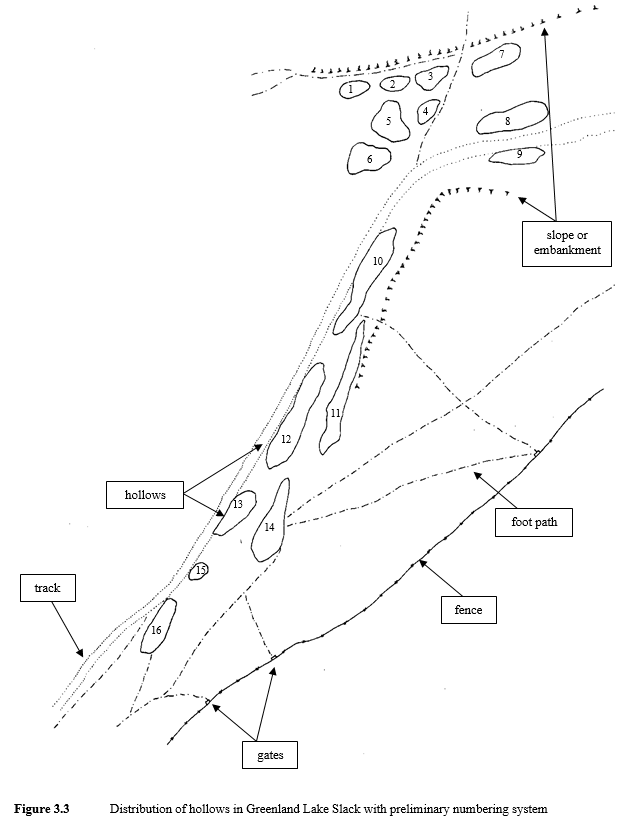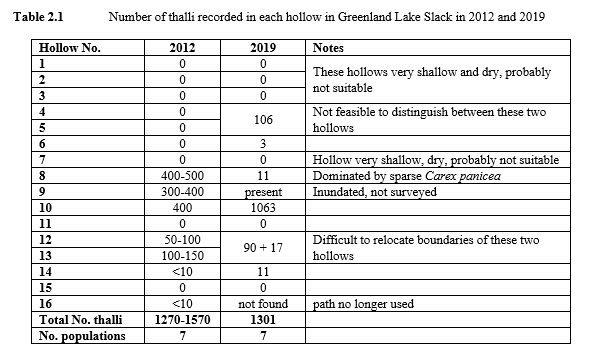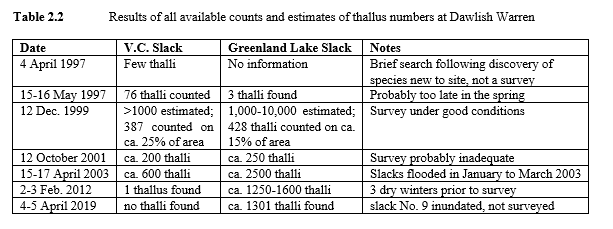Read the full report
Dawlish Warren is 1 of 7 sites in England where petalwort is found.
- Petalwort is a small, pale green plant which is one of the special interest features for which Dawlish Warren Special Area of Conservation (SAC) is designated. It is nationally scarce in the UK, being widely but sparsely distributed. Dawlish Warren is one of seven sites in England where the plant is recorded.

Between 1300-1700 individual plants in 7 main areas.
- Populations of Petalwort were found in Greenland Lake Slack in seven hollows, with a total of 1301 thalli (the main body of the plant) counted, although hollow No. 9 (which had supported 300-400 thalli in 2012) was not surveyed because it was inundated due to heavy rain the night before.
- Both sexes were recorded in three hollows and female plants only in another two. Including an estimate of up to 400 thalli in hollow No. 9, the total population of Petalwort in Greenland Lake Slack in 2019 is estimated to be 1300-1700 thalli (Figure 3.3, page 2 and Table 2.1, page 3).


After a slight fall in number 2003-2012, number of plants is stable.
- Comparison of the results of counts from previous years, although not directly replicated, suggests that when surveys were considered reliable (1999, 2003, 2012, 2019), the number of thalli recorded fell between 2003 and 2012 and has since remained stable. (Table 2.2, page 3)

No plants found near Visitor Centre.
- Unfortunately, despite intensive searches, no thalli were found in either of the slacks where plants had been introduced to the west of the visitor centre or in the Visitor Centre Slack. This suggests that transplanting was unsuccessful and that the Visitor Centre Slack population may now be extinct.
Main areas for petalwort at risk from inundation by the sea.
- Most of the remaining population could actually be lost as a result of a single sea incursion event. The report concludes that the prognosis for Petalwort at Dawlish is very poor without an extensive and imaginative translocation programme.
Future depends on management, sea level rise and visitor pressure.
- A number of suggestions are made in the report for potential methods to preserve the species onsite. In the event that any of the works are successful, it is noted that transplanted populations are likely to be subject to much higher pressure from tourism. In particular, if the area of the Warren is reduced by the sea, then remaining areas are likely to be subject to much greater pressure and may be compromised because of this.